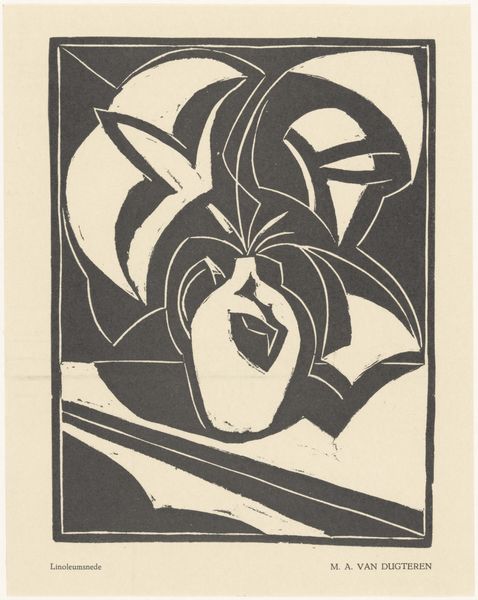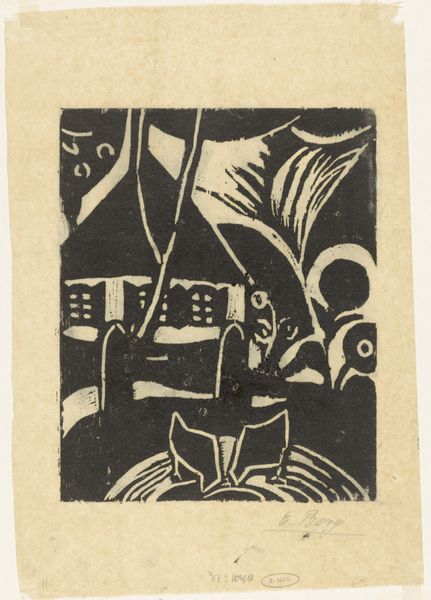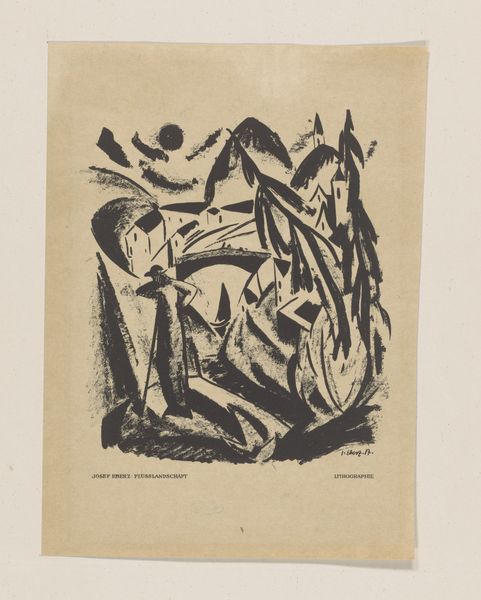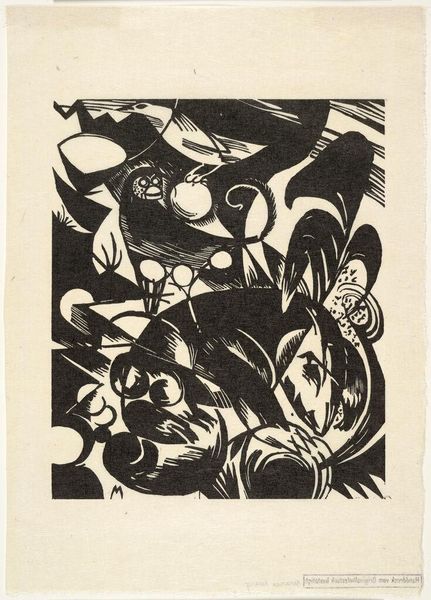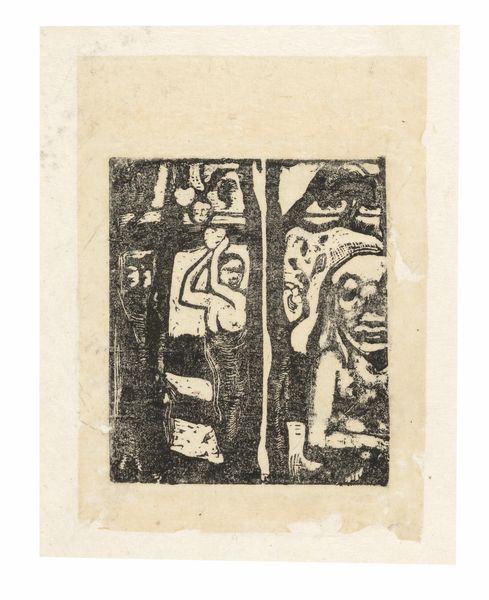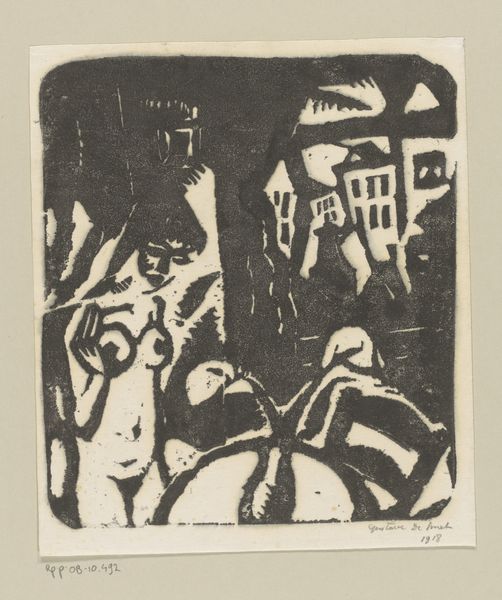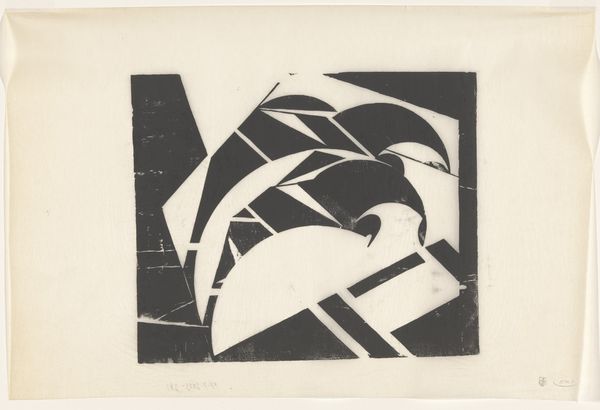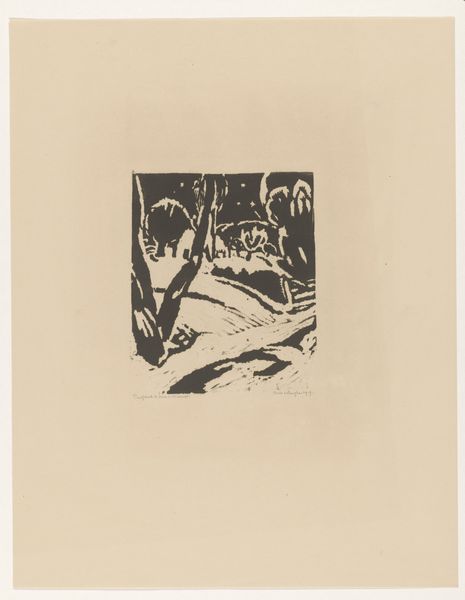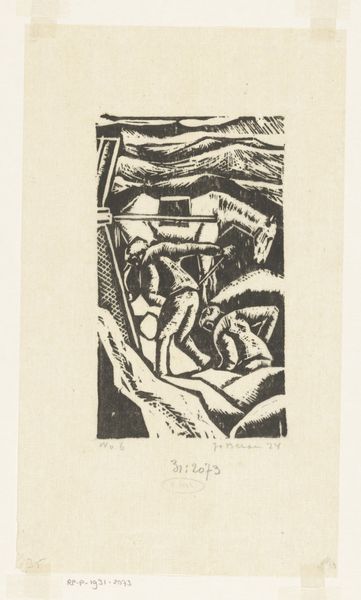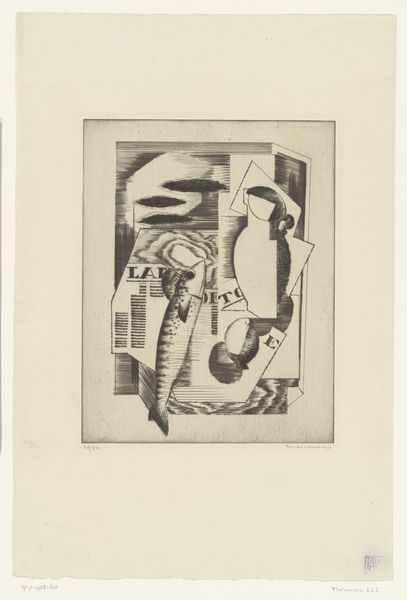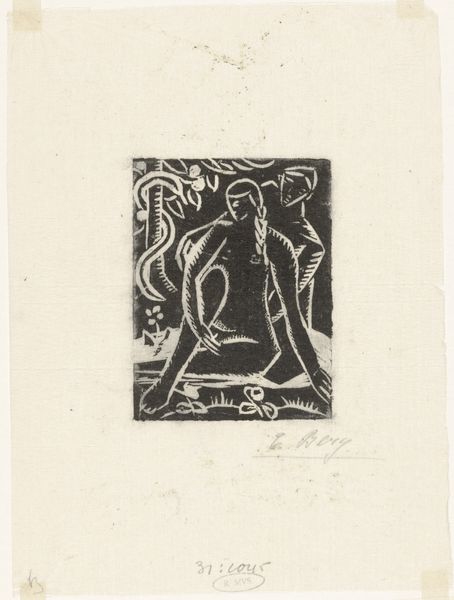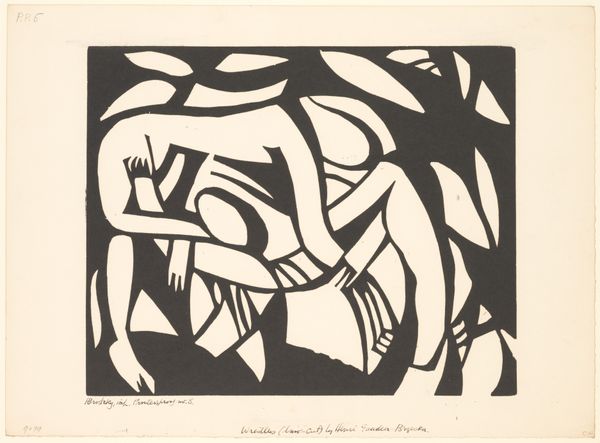
graphic-art, print, linocut, woodcut
#
graphic-art
# print
#
linocut
#
figuration
#
linocut print
#
expressionism
#
woodcut
Dimensions: height 210 mm, width 168 mm, height 280 mm, width 220 mm
Copyright: Rijks Museum: Open Domain
Editor: This is Else Berg’s “Processie,” made before 1919 using linocut and woodcut techniques. The stark black and white gives it a really powerful, almost unsettling mood. What jumps out at you? Curator: Well, given the historical context, pre-1920s, and its Expressionist style, this work seems to tap into a wider societal anxiety. Public religious displays, like processions, were often highly ritualized and even politicized events. The simplified forms, the bold contrast of black and white – what do you think they convey about Berg's view of this social ritual? Editor: I see what you mean! It definitely moves beyond a simple depiction. Maybe the high contrast hints at a starkness or rigidity in the social expectations around the procession itself? Curator: Exactly! Think about the art world at that time. Expressionism was used to depict psychological realities and social commentary. Berg is actively choosing to distort the naturalistic rendering of the figures to show some kind of feeling around this particular procession. We have to consider not just *what* she depicts but *how* she chooses to depict it. The simplification and reduction in the visual elements – are they respectful or critical? Editor: It makes you wonder about the intended audience and their potential reactions. Were they meant to feel reverent or question the traditions? Curator: Precisely. Considering the rise of secularism and critiques of organized religion during this era, this image likely participates in a dialogue about public expressions of faith and the individual's role within societal structures. It gives the image its subtle yet persistent social bite. Editor: It’s amazing how a seemingly simple linocut print can hold such complex social commentary. Curator: Indeed. It highlights how artistic choices – line, form, contrast – become tools for expressing perspectives on larger cultural and political dynamics. This deeper understanding enriches the viewing experience.
Comments
No comments
Be the first to comment and join the conversation on the ultimate creative platform.
